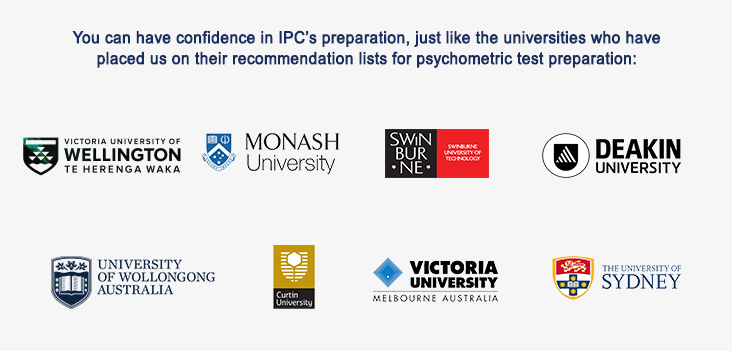The level of difficulty of your verbal aptitude test
Companies administering your psychometric testing typically have a variety of verbal aptitude tests with different levels of difficulty and benchmarks. The different levels of difficulty cater for employers’ different expectations of candidates’ verbal reasoning skills. Employers typically don’t expect candidates who apply for different jobs to demonstrate the same level of verbal reasoning skills. Their expectations of your verbal reasoning skills depend on the organisational level (such as graduate, professional or manager) and the type of occupation you are applying for. For example, if you are applying for a senior management role, you are typically expected to demonstrate stronger verbal reasoning skills than if you are applying for a graduate role. Similarly, if you are applying for a role in HR, you are expected to show higher verbal reasoning skills than if you are applying for a payroll officer position.
What is a difficult verbal aptitude test?
Each verbal aptitude test has a specific level of difficulty. This level of difficulty is maintained across all test questions. However, you are likely to expect the questions at the beginning of your test to be easier than those towards the end. A verbal aptitude test’ s level of difficulty is determined by four main factors:
- the length of the reading passage or statements,
- complexity of the text,
- use of higher language rather than simple words, and
- time constraints.
Typically, lengthier passages make it more difficult for you to comprehend the data and have sufficient time to read and solve the questions relating to the paragraph. Similarly, more-complex text such as a passage on medical procedures (for those who are not medical doctors) places a higher level of difficulty on a test-taker.
The use of higher language or rarer words in the English language add complexity to the text and require you to waste more precious time on comprehending the passage rather than answering the questions.
‘Time constraints’ is another fairly obvious factor that can be used to make the verbal aptitude test more difficult. The typical verbal aptitude test is designed so you can take up to 30 seconds to solve a question. This time frame also includes the passage reading time, assuming that there are several questions per passage. Therefore, allowing test-takers less than 30 seconds per question will make the test more difficult.
Practising for your verbal aptitude test
Having different levels of difficulty for the verbal aptitude test means that even if you have good control over the English language and you are a quick reader, you are still likely to hit some hurdles when taking your verbal aptitude test. Therefore, we recommend that you practise as much as you can before taking your real verbal aptitude test.
Online, practice verbal aptitude tests
You can practise by taking our practice verbal aptitude tests, which are designed to match the level of difficulty of the real verbal aptitude test that you are likely to receive. Upon completing each practice verbal test, you will receive an immediate full test report including:
- your total score compared against others applying for a similar role
- a list of your correct and wrong answers
- detailed answer explanations for each test question so you can learn how to avoid making a similar mistake in your real verbal aptitude test.
Online, verbal aptitude test course
You can take our online verbal aptitude test course to learn about the strategies and tactics for efficiently reading verbal reasoning passages, identifying the right word analogies, concluding the right conclusions and solving verbal aptitude test questions.
The course also includes the do’s and don’t’s of the verbal aptitude test and verbal aptitude test questions examples.
We strongly recommend that you take the verbal aptitude test course to get the ‘ins and outs’ of this test. Then apply this knowledge into practice using our practice tests.









